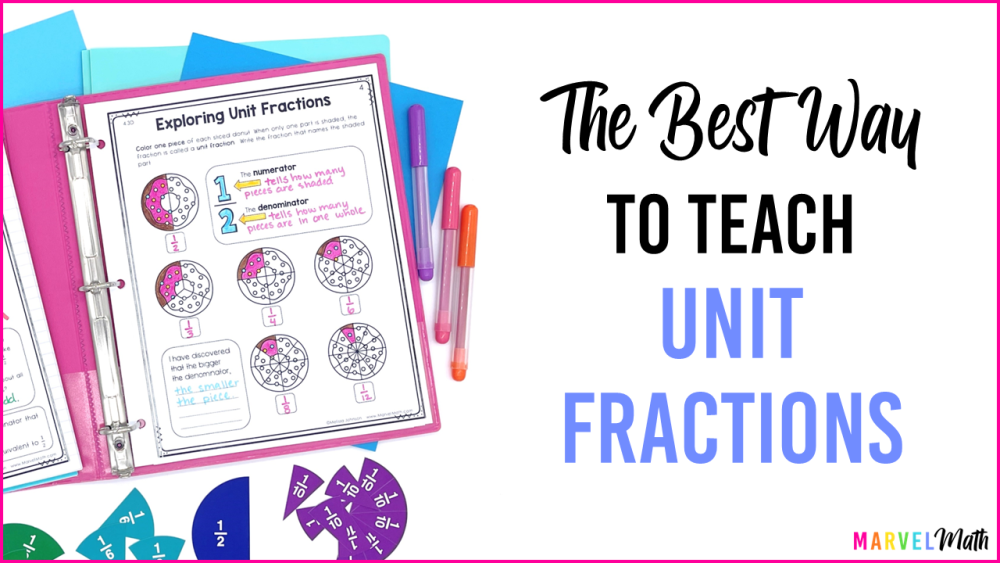
I absolutely LOVE teaching fractions!!! Here is one of my favorite lessons ever to help introduce fractions to your students. The focus is on building meaning of the unit fraction. Students will truly internalize the meaning of the denominator in this lesson.
Get All the Activities Shown in this Post for FREE!!!

What is a unit fraction?
A unit fraction is one part of a whole. The numerator of a unit fraction is always 1, and the denominator is the number of pieces one whole was evenly divided into. 1/4 is a unit fraction, and we can see that one whole was divided into 4 equal sized pieces. 1/4 represents one of those pieces.
Why do some students struggle with fractions?
With whole numbers, the larger the number is the greater the amount is, but that is not true with fractions The larger the denominator is, the smaller the piece is. The closer the numerator is to the denominator, the larger the fraction is. Fractions are hard for some students because their minds need to “unlearn” some things they thought to be true about all numbers. To many students, they feel like the “rules” in math are suddenly changing on them when fractions are introduced.
Students have learned the value of whole numbers. We know that 8 is greater than 2. When we tell them that 1/8 is smaller than 1/2, their minds struggle to make sense of this. The solution: Don’t tell them that 1/8 is smaller than 1/2, let them discover that truth and many other patterns with fractions on their own using a guided discovery lesson.
And now on to my FAVORITE Fraction Lesson ever!
Introducing Unit Fractions Lesson
I started the lesson by taping the fraction cards on the board and then I opened the box of donuts and walked through the class with it. I asked them to take a deep breath of the fresh, sweet smell as I passed by.
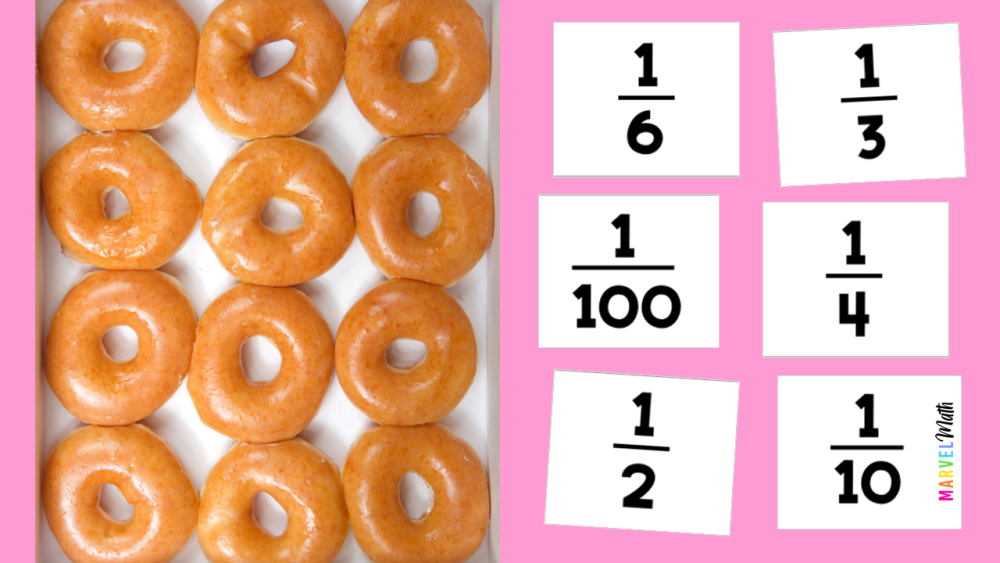
Each group sent one student to the board and I had them face the class and explained how this was all going to go down. When they turned around they had 10 seconds to take a fraction card from the board, which would determine what fraction of a donut each student in their group would receive. When I said go, the students in the front frantically looked at the cards.
Student Misconceptions
Someone grabbed ½ right away. The next person lurched forward to nab 1/100. Yes, 1/100 was the 2nd card taken, while so many larger fractions remained. Soon 1/10, 1/6 and 1/4 were all taken. There were only 5 groups, and 1/3 was left on the board. Nobody wanted 1/3. Already, you can see the misconceptions that were held by many students. Inside, I was absolutely giddy!!! Today, I really got to teach students about fractions!!! Fractions are introduced in 1st grade, yet many students in 4th grade still don’t really understand them. When I taught Algebra, a lot of freshman didn’t understand them either.
Today that would end for this group of kids.
I wasn’t going to tell them about fractions.
They were going to experience fractions.
I took out a donut and a plastic knife and asked the “1/4 group” to stand up. Then I explained that the numerator was the number of parts each person would receive, 1, and the denominator was the number of parts I would cut one donut into, 4.
After cutting 2 donuts into fourths, I gave each group member their piece. I saved one piece and left it under the document camera and labeled it 1/4.
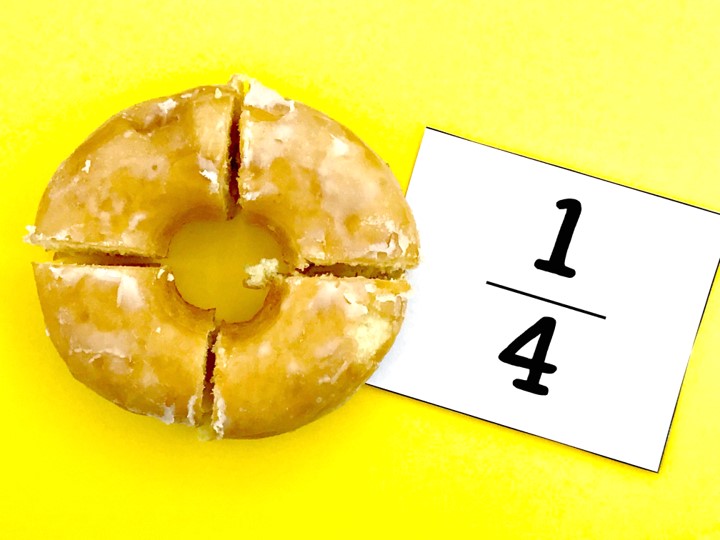
The 1/3 card had never been taken off the board. I asked the “1/100 group” if they wanted to trade their card for the 1/3 card. They conferred and decided to stick with their 1/100th slice of a donut. I didn’t slice theirs yet, but went on to slice pieces for the 1/2, 1/6, and 1/10 groups.

With each round, we discussed what the numerator and denominator of each fraction meant and predicted how each piece would compare to the other pieces that had already been sliced. It is really important to ask students to compare a piece you are about to cut BEFORE actually slicing it, because you want to develop visualization and thinking skills in your students.
The “Ah-Ha” Moment
By this time, the 1/100th group was begging to switch their card. Being the loving teacher that I am, I didn’t let them.
They could forgo a larger piece of a donut for the opportunity to learn a lesson they would never forget: The larger the denominator, the smaller the piece.
I took one of the leftover 1/10th slices and we talked about how we could make 1/100th pieces (more like crumbs) out of that slice. If we cut the 1/10th slice into 10 pieces, each one would be 1/100th of a donut.
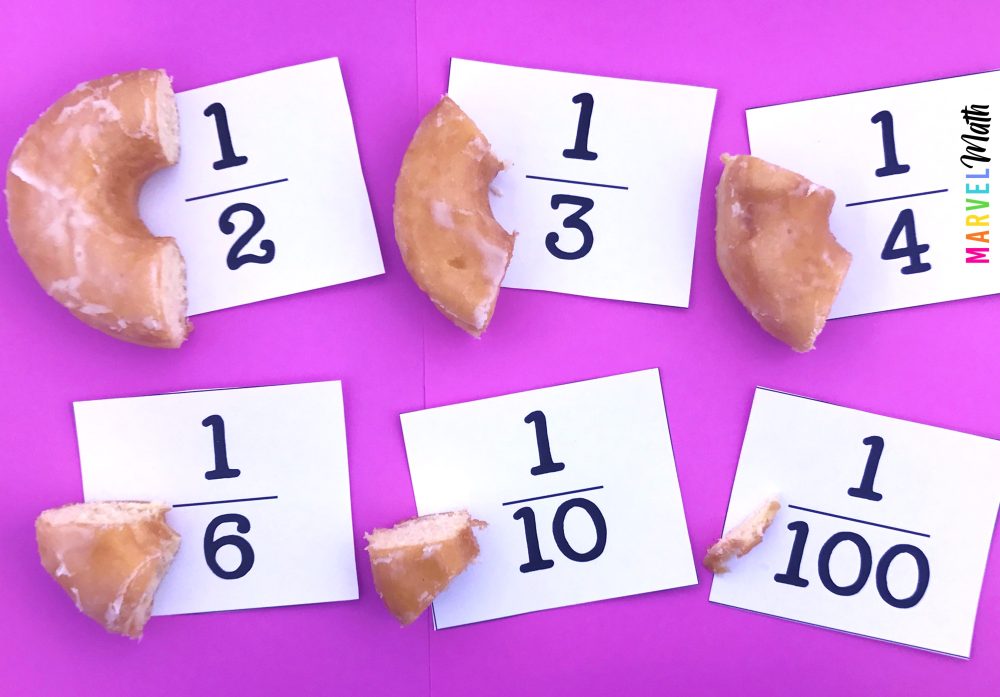
Promoting Student Discussions
The person doing the talking is the person doing the learning. Our students need to be talking about math during lessons.
Why? Because the cognitive processes in our brains that are occurring when we explain and justify a concept are building neural pathways and deepen our understanding.
How did we reinforce what we learned about Unit Fractions?
After our exploration, we recorded what we learned with the “exploring unit fractions” and “comparing unit fractions” notebook pages.
It is important for students to record new concepts in both pictures and words.
The “Exploring Unit Fractions” notebook page summarized our lesson and then became a page for students to refer back to in the rest of the unit. Looking at this page in the future, brought back all the memories from the lesson and helped students remember the key points in the lesson. The “Comparing Unit Fractions” page extended learning by having students explain and reason. There is something amazing that happens in the brain when students explain a new concept they learned in their own words.
Send me these activities for FREE!!!
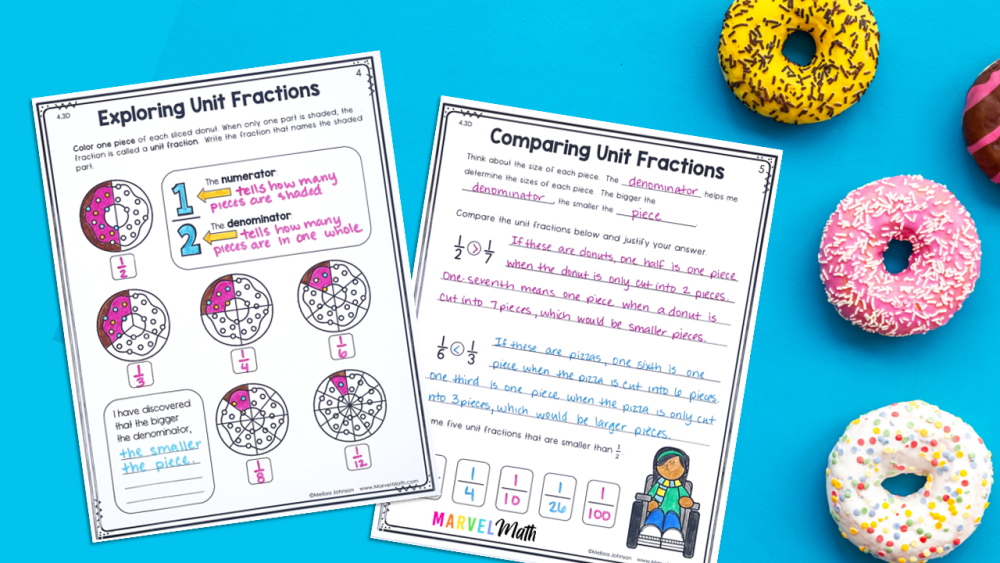
Students also responded to a math journal prompt in their spiral notebooks. They love being able to use their markers to draw pictures and explain their thinking in their math journals. Students who need more support can use the sample journal prompt page to get ideas on how to set up their answer. The journal prompt provides an opportunity for students to think more deeply about what they learned in the lesson.
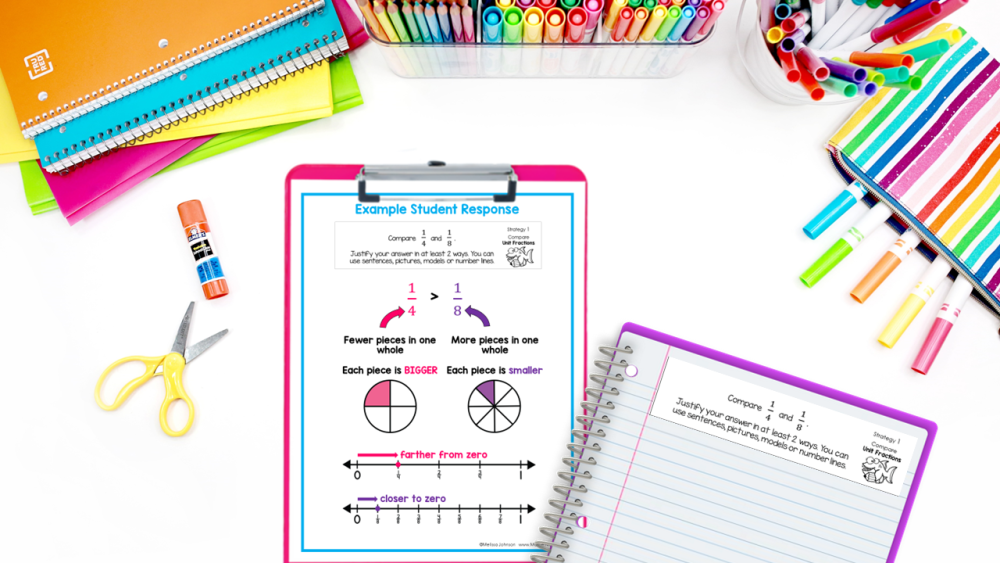
I used this exit ticket to see what each student learned in the lesson. Exit tickets make it easy to see who is ready for the next lesson and who needs some quick reteach before moving on. The best intervention is the one that happens right away before misconceptions can take root. After flipping through the exit tickets, I pulled students who didn’t understand the concept to meet at my small group table. We used fraction circle pieces to order unit fractions from least to greatest, while the rest of the class finished the fraction worksheet independently.
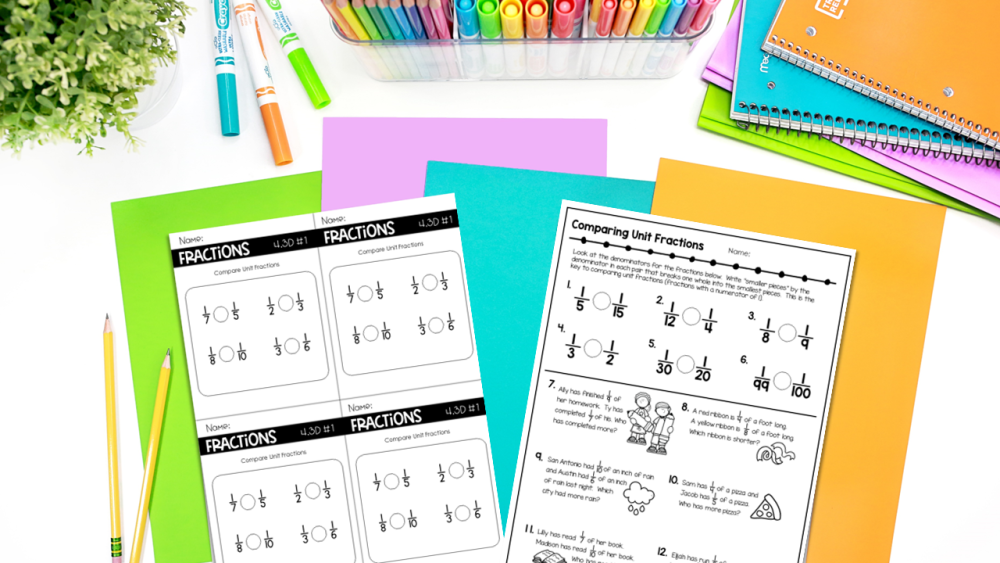
Want the fraction cards, lesson plan, notebook page, worksheet, journal prompt and exit ticket for free? Click on the link below and I will send it all to you. I Hope you and your students love using these fraction activities!
Get All the Activities Shown in this Post for FREE!!!

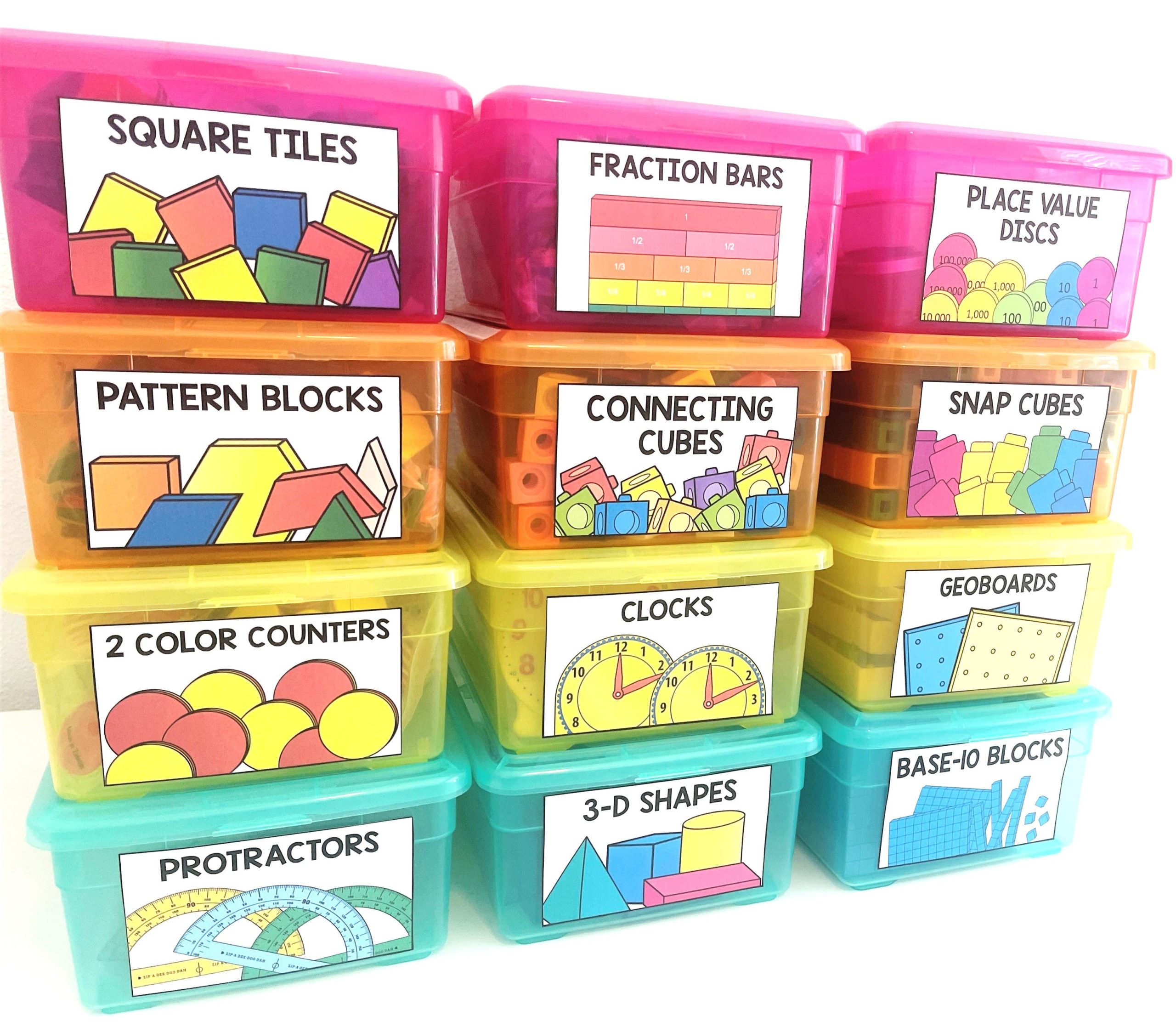
Thank you for sharing. I’m working with my 5th grader and for 90% of fractions she has no trouble but that other 10% she does. I home school her with online an they don’t start at the basics, so I’m left scrambling to teach her basics. I don’t want my 2nd grader running into the same issues. I appreciate your time and wisdom.